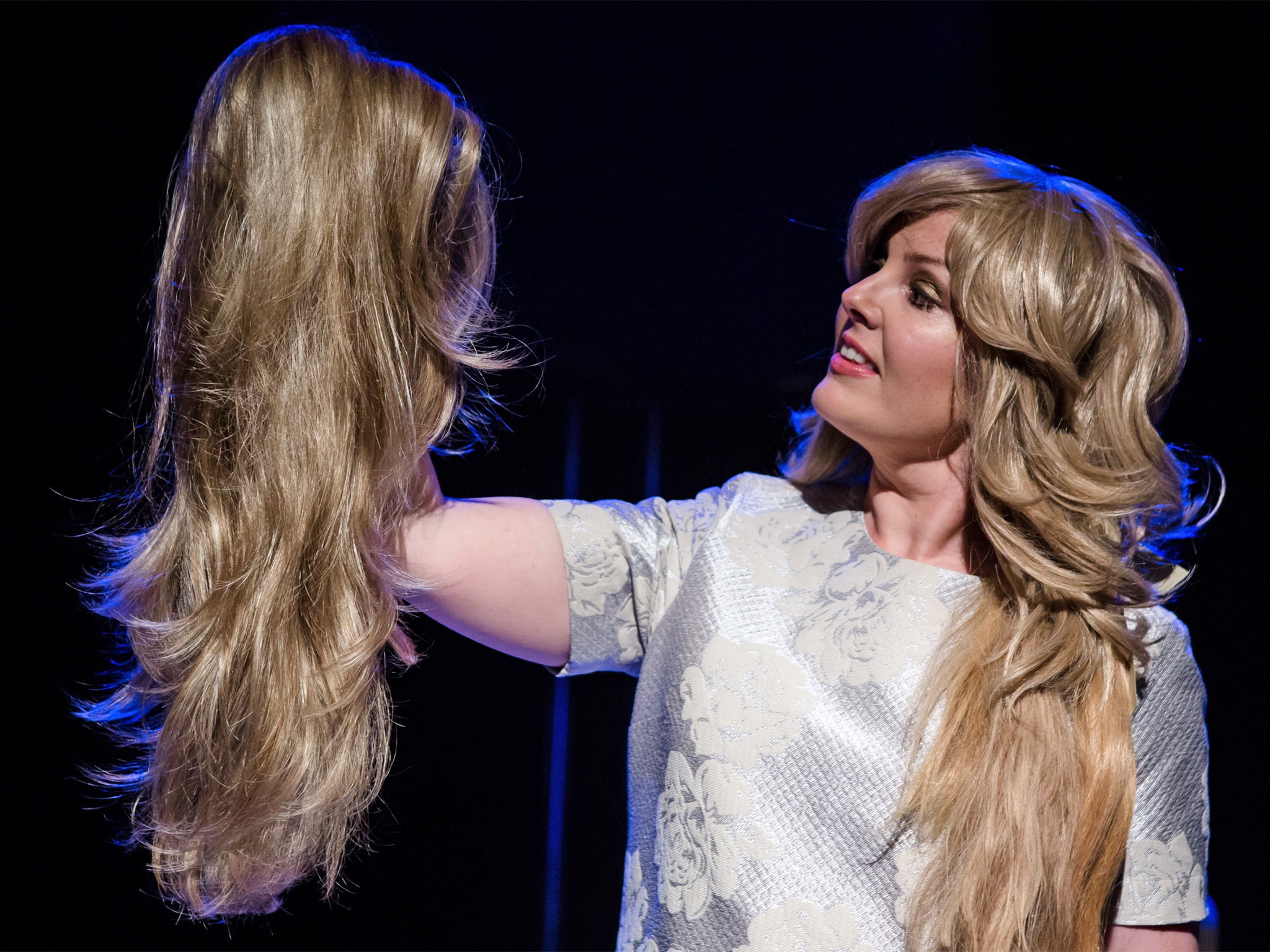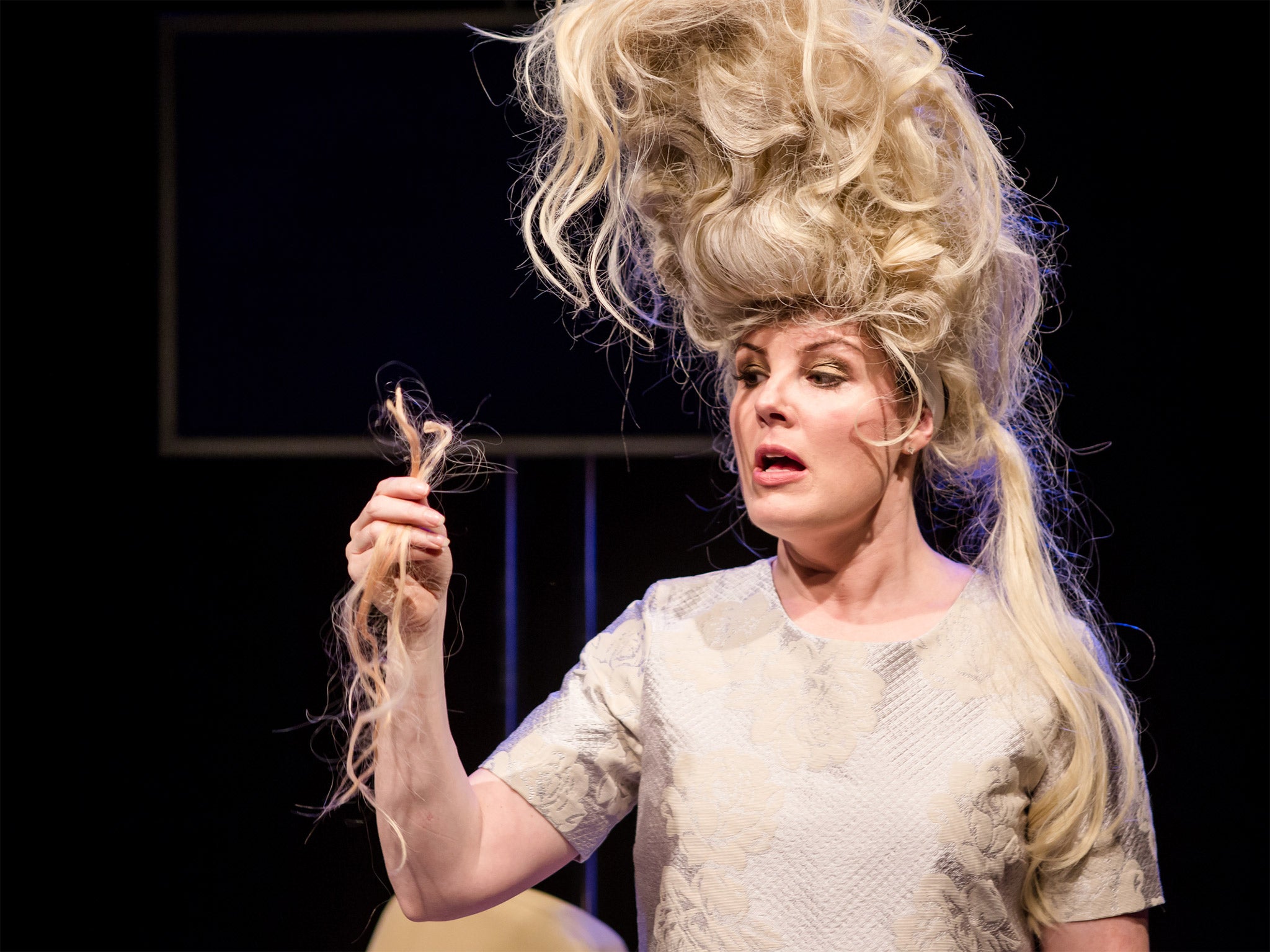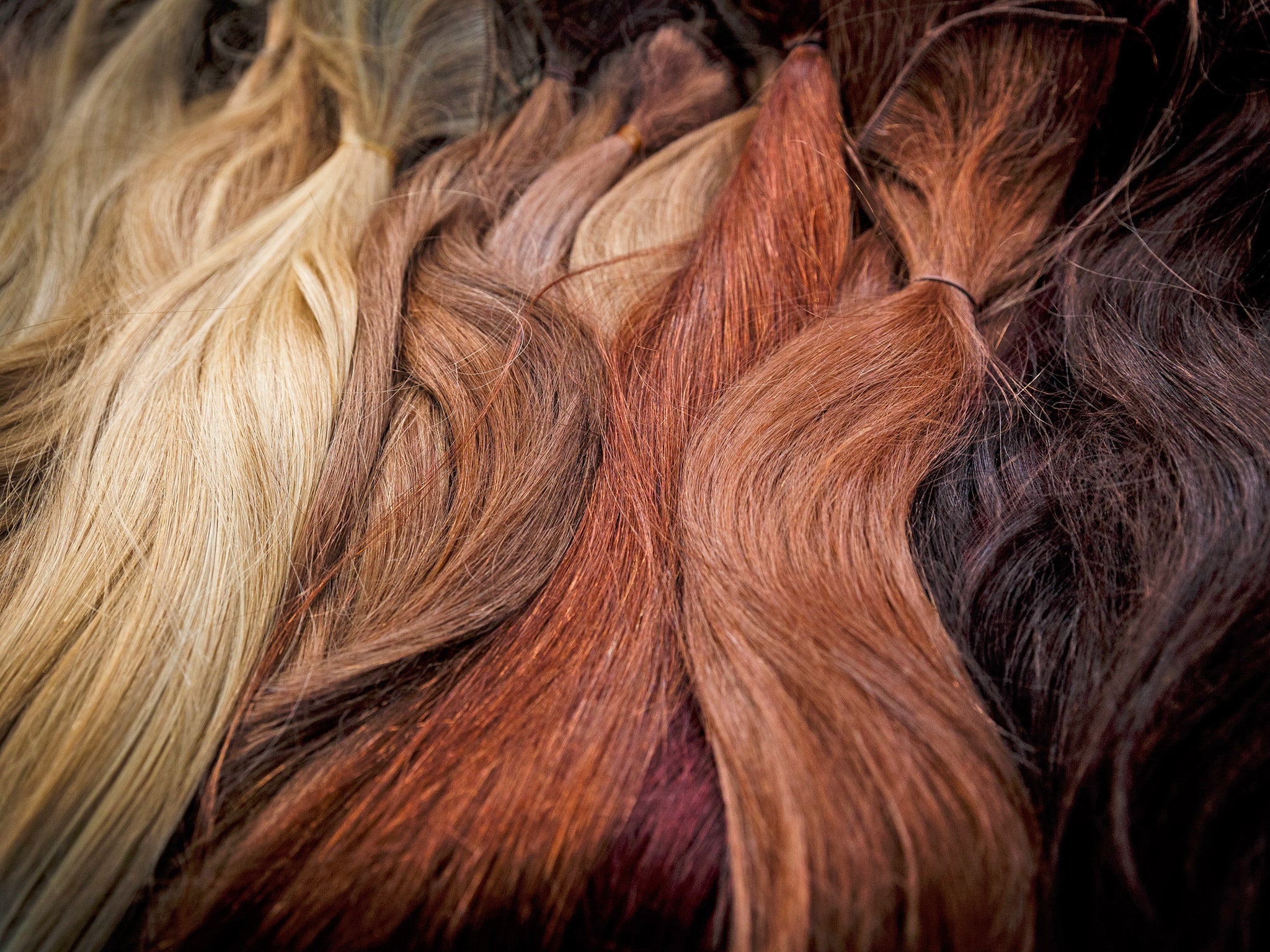Edinburgh Fringe 2015: New show Hair Peace traces origins of human hair extensions
Edinburgh performer crosses continents to find source of her three 'bales'

An Edinburgh performer, astonished at the popularity of human hair extensions, travelled across continents in search of the individual whose donation made her on-stage hairdo possible.
Victoria Melody has created an entire show, Hair Peace, for the Edinburgh Fringe based on her investigations into the source of hair extensions.
Little more than a generation ago hair extensions were a niche market. Today, she discovered, they are big business with £38 million worth imported into the UK annually. Britain is the third biggest importer. “Experts were saying the rise in popularity of hair extensions at the moment is similar to the boom in people colouring their hair in the 1960s,” she said.
Ms Melody’s odyssey was prompted by the experience of wearing someone else’s hair as part of an earlier show. As she was preparing backstage she asked her hairdressers about it: “I asked them where the hair extensions were from and they didn’t know. And they didn’t care. It’s real human hair, and I thought it was weird they didn’t ask questions. How do we not know who it has come from?” She decided to find out.

Her inquiries took her took her to the University of Warwick, which helped her find out how the hair comes to the country. “It comes in not as a body part but as a beauty accessory,” she said.
Ms Melody’s extensions – made up of three “bales” – were analysed by forensic scientist David Ballard at King’s College London. The results showed one was from India, one from Russia, and the third hard to identify.
In southern India, there is a Hindu ritual of men, women and children shaving their heads in thanks. The temples then make millions a year selling the hair. Ms Melody visited Venkateswara Temple in Tirumala and found that “most people didn’t know their hair was being sold, but they didn’t seem to mind too much when I asked them”.
From India, Ms Melody went to Russia. “One dealer I interviewed would check out girls in the street. He didn’t see people, he saw hair.”
Many women who sell their hair are paid a pittance, but dealers sell it at a hugely marked-up rate. British salons can charge hundreds of pounds to put in extensions. There has been talk of a black market in prison hair in Russia, as well as criminal gangs in Brazil forcibly taking women’s hair. “It would be great if there was some regulation,” Ms Melody said, adding jokingly: “Maybe fair trade hair.”

“I am an obsessive searcher and I’m really rigorous with my research,” she said. Warwick even suggested she do a PhD in the subject.
Fringe guide:
Best comedy shows, from Johnny Vegas to Katherine Ryan
Best in Theatre, from Fake It ‘till You Make It to Murmel Murmel
Best performances from Sylvie Guillem to Correction
Best music, books and Art, from The Flaming Lips to Val McDermid
As part of her research, she went into UK schools where the trend of wearing hair extensions is on the rise. “In one class of 16-year-olds going to their prom, 70 per cent were wearing human hair extensions for it.”
Most had never thought about where it had come from, though they knew it was human. Asked if they would like a picture of the person it came from they said it would make them feel worse.
So did she find whose hair had been glued into her head for that beauty pageant? Ms Melody was only prepared to reveal all to those heading to the Pleasance Courtyard for her show.
Gasping for hair: How the market has taken off
The desire to have celebrity locks has given rise to a multimillion-pound trade in human hair extensions.
In 2011, the UK was the third largest importer of hair extensions in the world, behind the US and China; that year £38m-worth of hair entered the country. India, Russia and Brazil are among the big exporters.
Training courses on how to fit human hair extensions have become oversubscribed as more and more clients demand them, with salons charging hundreds of pounds to fit them.
Lucinda Ellery, who has provided hair extensions to celebrities for decades, told Reuters that the popularity of extensions had driven up the price of human hair. “In the last 10 years, it’s tripled, doubled and tripled again.”
Synthetic hair is still used but has become less popular as it does not look so natural, and it cannot be curled or straightened.
Join our commenting forum
Join thought-provoking conversations, follow other Independent readers and see their replies
Comments